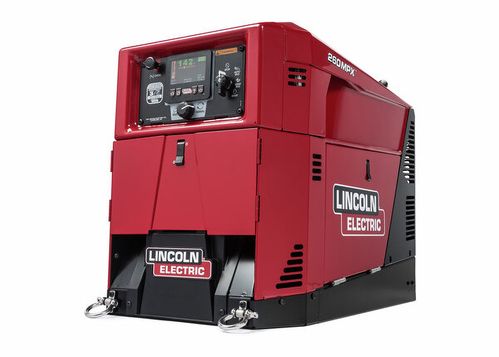Understanding Welding with Electricity:

New – POWER MIG® 211i MIG Welder
Includes:
- Magnum® PRO 100L Gun 10 ft. (3.0 m) (K4528-1)
- 230V to 120V power cord adapter
- Work Cable and Clamp
- Adjustable Gas Regulator and Hose
- Gas Nozzle
- Gun Cable Liner (pre-installed in gun)
Journey into Arc Welding
Introduction
Welcome to the intriguing world of welding, where the fusion of metal takes place through the fascinating process of arc welding. In this blog, we embark on a journey to demystify the concept of welding with electricity, exploring its nuances, applications, and the indispensable role it plays in metal fabrication.
Unraveling the Mystery of Arc Welding
At the heart of welding with electricity lies the captivating phenomenon known as arc welding. This intricate process involves the joining of two metal pieces through the application of electrical energy. The key player in this dance of electrons is the electric arc, a fiery bridge that transforms the metal landscape.
Arc Welding is the process by which two pieces of metal are joined together by the use of electrical energy. Arc welding creates an electric arc that melts the base metal and typically a filler wire. The subsequent pool of molten metal then solidifies and fuses the edges of the parent material to join the metal together. To make this possible, electricity is passed from the power source through an electrode. The electric current is converted to heat due to the resistance in the flow of electrons across the air gap. This intense electrical energy creates an arc.” – Technoweld
The Core Process
Let’s delve into the mechanics of arc welding. As electrical energy courses through the electrode, it encounters resistance in the form of an air gap, generating intense heat. This heat, in turn, gives birth to the electric arc, a molten bridge that performs the intricate task of melting the base metal and a filler wire, creating a molten pool. This molten amalgamation solidifies, fusing the edges of the parent material and forming a robust bond.
Understanding the core process is crucial for welders, whether seasoned professionals or enthusiastic beginners, as it lays the foundation for mastering the art of arc welding.
Applications of Welding with Electricity
Arc welding finds its application across a myriad of industries, from construction and automotive to art and sculpture. The versatility of this welding technique makes it a go-to choice for fabricators seeking strength and precision in their metalwork.
Stay tuned for the second part of our exploration into welding with electricity, where we will unravel safety measures, delve into welding equipment, and uncover the secrets of arc welding techniques. Whether you’re a seasoned welder or someone taking their first steps into the world of metal fusion, our aim is to provide insightful and rarely discussed information that enriches your understanding of welding with electricity.
Safety First: Navigating the Arc Welding Environment
Before we dive deeper into the intricacies of arc welding, let’s address a paramount concern – safety. Operating within the arc welding environment demands adherence to stringent safety measures. Essential safety gear becomes your armor, protecting against the potential hazards posed by intense heat, sparks, and UV radiation.
Welding Safety Equipment
- Welding Helmet: A crucial shield for your eyes and face, providing protection from intense light and sparks.
- Welding Gloves: Heat-resistant gloves safeguard your hands from the searing temperatures involved in arc welding.
- Protective Clothing: Flame-resistant clothing adds an extra layer of defense against sparks and molten metal.
- Respirator: Ensures that you breathe clean air, especially when working in confined spaces or environments with fumes.
- Essential Tools and Equipment
To embark on your journey into welding with electricity, you’ll need the right tools and equipment. Here’s a comprehensive list that caters to both beginners and seasoned welders.
Welding Equipment
- Welding Machine: The cornerstone of arc welding, providing the necessary power to create the electric arc.
- Electrodes: These conductive materials facilitate the flow of electricity, creating the arc that melts the metal.
- Ground Clamp: Ensures a secure electrical connection by grounding the workpiece.
- Welding Table or Workbench: A stable surface for your welding projects, equipped with clamps to secure the workpiece.
- Chipping Hammer and Wire Brush: Essential for cleaning and preparing the welded area.
- Welding Pliers: Used for handling and manipulating hot electrodes.
Mastering Arc Welding Techniques
Now that you’re equipped with the necessary safety gear and tools, let’s explore some advanced arc welding techniques that go beyond the basics.
Advanced Techniques
- TIG Welding: Tungsten Inert Gas welding offers precise control and is ideal for thin materials.
- MIG Welding: Metal Inert Gas welding is known for its speed and efficiency, making it suitable for a variety of applications.
- Flux-Cored Arc Welding: A versatile technique that works well in windy conditions, thanks to the protective flux covering the electrode.
Conclusion
As we conclude our exploration into welding with electricity, remember that mastering this art is a journey of continuous learning and refinement. Whether you’re a beginner or an experienced welder, our aim is to provide you with insights and information that elevate your understanding of arc welding.
Stay tuned for more educational content, as we delve deeper into the world of welding, uncovering nuances that are seldom discussed but integral to your growth in the welding industry. Happy welding!
Here are some additional resources that you might find helpful:
The Basics of Electricity in Welding:
https://technoweld.com.au/2019/05/30/the-basics-of-electricity-in-welding/
Arc welding:
https://en.wikipedia.org/wiki/Arc_welding
